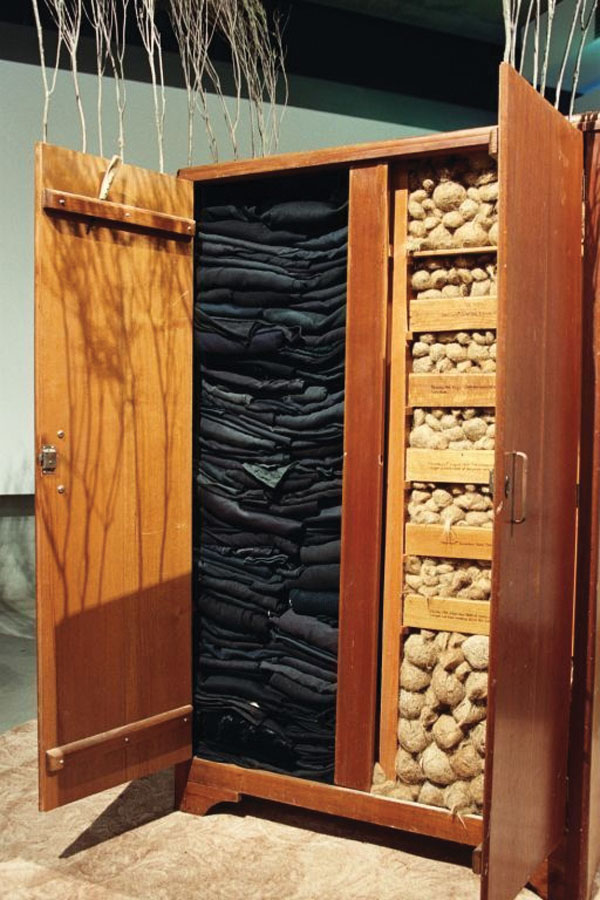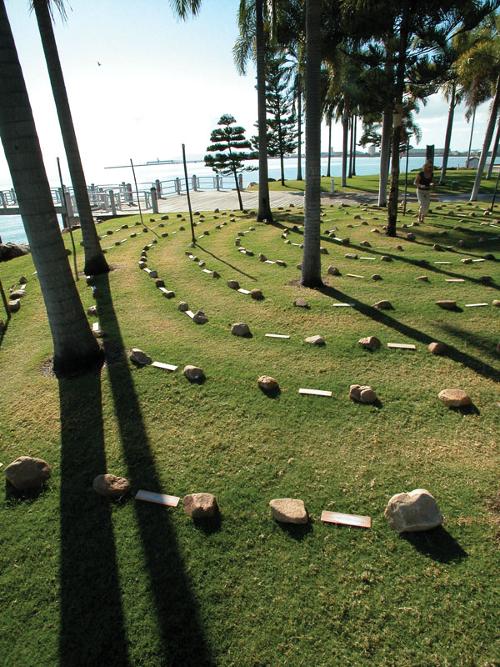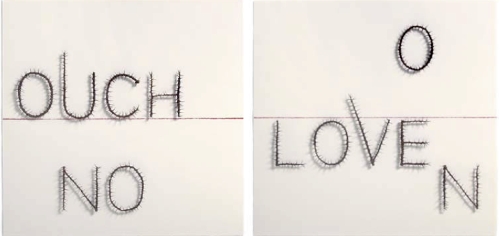
For three weeks artist Julie Gough worked with five South Australian art students as her assistants to make an installation in the SASA Gallery using a story that she brought with her as a catalyst. The project was an initiative of the Director of the SASA Gallery Mary Knights who has been busy devising a number of projects which cleverly put university research into the gallery in different ways and connect visiting artists and academics with local students. The design and printing of the excellent catalogues are also used as a learning process for Visual Communications students working with lecturer Fred Littlejohn.
The story that Gough brought to Adelaide was in the form of journal excerpts from 1830-40 written by John Scott, a sealer on King Island. She found the diary when looking into her own Aboriginal ancestry. The part of his diary that caught her eye, forty entries over seven years, were about a mysterious woman he called The Ranger who stayed out of sight but lived near him and the two Aboriginal women and three children who lived with him. Her presence was connected with thefts and objects, the smoke of her fires and finding her hut packed full of clothing. Yet he never found her though the women sighted her once. After his death by drowning in 1843 the Ranger is said to have joined the two women.
King Island was a notorious place for shipwrecks and finding stuff on the beach would have been a significant part of an island dweller's life. Gough's installation is made from found and secondhand materials redolent with the pre-used aura of cheap old furniture (sourced from local secondhand shops) and the voices tangled in old clothes (sourced in a bale from St Vincent de Paul). The furniture and clothing are arranged in variations over seven islands made of secondhand carpets on the concrete floor of the gallery. The Jane Campion movie The Piano came strongly to my mind on first seeing the installation, items of civilisation on a beach, whether luggage, flotsam or jetsam, removed from their context they become existential symbols.
Piles of seaweed in one corner took a while to assert their presence but when they did the salty weedy scent was powerful but not unpleasant. Gough burnt the words from the diary onto the furniture, a bed, a wardrobe, a table, a desk, chairs, with a burning tool that imitates pokerwork. Secondhand clothes sorted into colours and rolled are packed under chairs and inside the wardrobe along with beach tumbleweeds. Under the desk is packed with charcoal (sourced from the local Hindley Street Charcoal Grill).
For all its rawness this is a piece of detail and gradual revelation. As well as reading the work literally in the form of words, history inscribed on objects, there are small details everywhere like the small glass box of periwinkle shells, the burn marks under the spoon, the small pillow made from kangaroo fur in the bed that is full of seaweed. Above all an atmosphere inhabits the gallery, partly a subterranean one created by blocking out the high windows, partly from seaweed and the silence feeling of a shipwreck.
Pat Hoffie's essay describes how Gough reworks the past seeing alternate voices and stories hidden within objects, memories, landscapes and stories. Gough's ongoing project is to investigate silences about Aboriginal history in Australian history and one of her works was incorporated in Federation Square in one of the Colonial Australian Art galleries to good effect. The work is raw, tentative, urgent and reflects the hidden nature of the stories it seeks out.
In this exhibition the sense of ingenuity and making do in the work is particularly valuable in a context where students may always feel that work must be very finished before it gets into a gallery.












